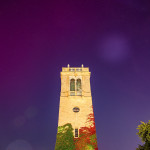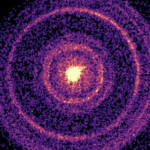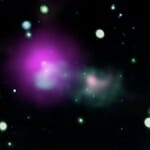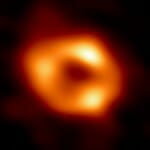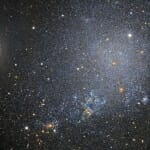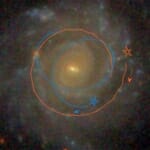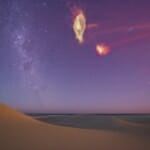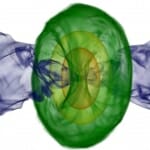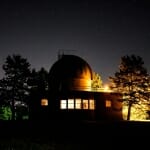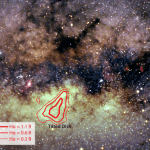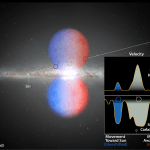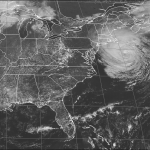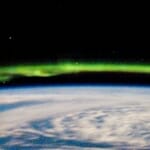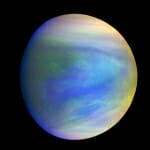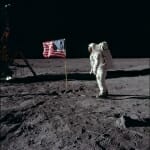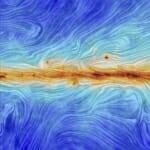Tag Space & astronomy
UW–Madison physicists play key role in international observatory
Physics professor Keith Bechtol and his research group have been key players in bringing the Vera C. Rubin Observatory in Chile to the main stage. Now its state-of-the-art telescope has started taking its first images of the night sky. Read More
Northern lights dance above campus
Those who got outside after about 9 p.m. on Thursday night enjoyed a show in the sky as the aurora borealis danced above campus. Read More
Astronomers map Milky Way by light of exploding star
The burst of radiation has given astronomers an unprecedented look at the structure of the Milky Way and a new understanding of the sources of subatomic particles zipping through our planet. Read More
Supernova remnant is source of extreme cosmic particles
Astronomers have long sought the launch sites for some of the highest energy protons in our galaxy. Now, a study using 12 years of data from NASA’s Fermi Gamma-ray Space Telescope confirms that a remnant of a supernova, or star explosion, is just such a place, solving a decade-long cosmic mystery. Read More
Speed and dense gas bend jets of matter streaming away from some galaxy centers
Understanding the environment that shapes jet direction helps astronomers understand how galaxies evolve, but just how the matter is launched away from a black hole is an open question. Read More
Madison-based computing power makes it possible to see our black hole for the first time
A team of scientists and the National Science Foundation shared images of Sagittarius A*, the black hole at the center of the Milky Way galaxy. Read More
Dark Energy Survey catalogs nearly 700 million astronomical objects
Astronomical researchers around the world can access these unprecedented data and mine them to make new discoveries about the universe. Read More
Astronomers model, determine how disk galaxies evolve so smoothly
Using advanced computer simulations, scientists from UW, Iowa State and IBM are learning how galaxies get their characteristic structure — super-bright centers fading away to dark edges. Read More
Massive halo finally explains stream of gas swirling around the Milky Way
Astronomers have solved a 50-year-old puzzle, discovering that the halo of warm gas surrounding the Magellanic Clouds likely acts as a protective cocoon. Read More
Comet watching at Pine Bluff
A group of people gathered at UW–Madison's Pine Bluff Observatory in Cross Plains earlier this week to see a rare sight. Comet NEOWISE – officially called C/2020 F3 – passed overhead and was visible to the naked eye, although binoculars helped. Read More
First optical measurements of Milky Way’s Fermi Bubbles probe their origin
Using the Wisconsin H-Alpha Mapper telescope, astronomers have for the first time measured the Fermi Bubbles in the visible light spectrum. Read More
UW–Madison VisPy data visualization project awarded Chan Zuckerberg Initiative grant
A programmer is working to make scientific data easier to picture, from creating images of spiral galaxies based on theoretical data to visualizing satellite imagery. Read More
Mysterious cloud ‘absorbers’ seen to drive Venusian albedo, climate
A better picture of the weather on Venus and how it is influenced by changes in the reflectivity of the clouds has emerged, thanks to new research. Read More


